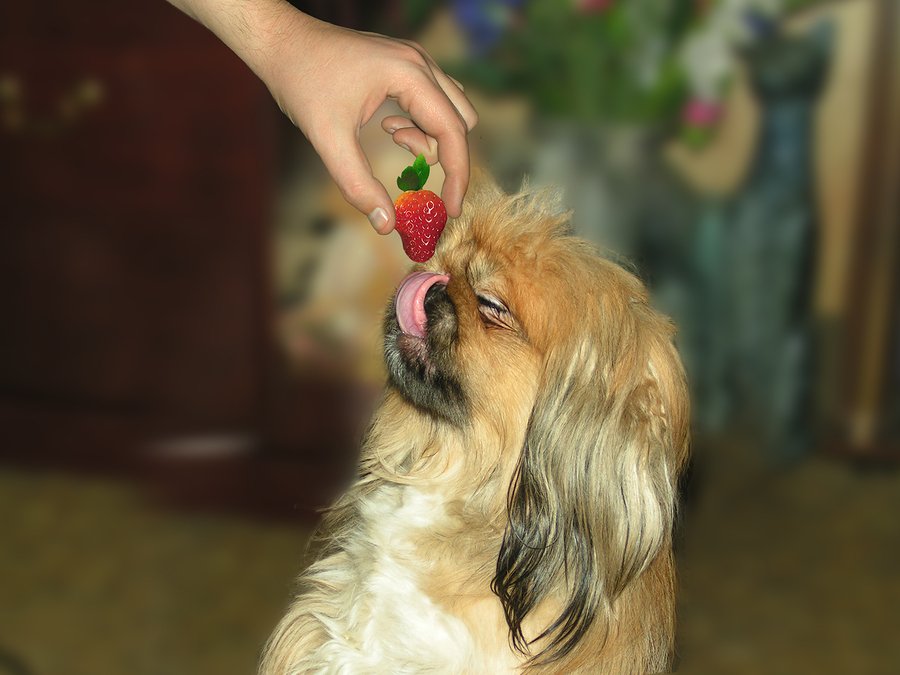BIGSTOCK

For creatures with such a sensitive nose, dogs seem happiest when they reek. This is particularly true of dogs who romp off leash, picking up bits of detritus in their fur and, if lucky enough, rolling about in something unidentifiable and rank, often the remnants of a dead animal.
Fortunately, dogs can be restored to their sweet-smelling selves, for the most part, with a good bath. Sudsing in the tub now and then with a dog-friendly shampoo (shampoo for people can prove too harsh for their skin), or when your dog has gotten into something particularly vile, should do the trick. But if bathing does not make a significant change in your dog’s foul smell, it may be because there is a more serious issue that warrants a visit to your veterinarian.
“In most cases, a dog’s skin odor is a consequence of an increase in the cutaneous flora,” or the microorganisms that are on your dog’s skin, says Lluis Ferrer, DVM, DECVD, PhD, a veterinary dermatologist at the Cummings School of Veterinary Medicine. Loosely translated, that means offending bacteria on the skin create the odor. Skin folds often have bacterial overgrowth with an accompanying bad smell — the reason shar peis and other wrinkly dogs tend to have more of an unpleasant odor than other dogs. But any dog with a bacterial infection on the skin can be prone to a strong malodor, and in those cases, a doctor-prescribed treatment may very well be in order. Bathing alone won’t take care of the problem.
Shar peis and other dogs with an abundance of skin folds also need special care with their skin folds to avoid not just an overgrowth of bacteria but also yeast infections. They, too, often herald themselves with an unpleasant odor. Along with shar peis, yeast overgrowth, most often Malassezia, tends to be found in breeds that include the dachshund, West Highland white terrier, basset hound, American cocker spaniel, shih tzu, and German shepherd.
Breed type and number of skin-folds are not the only predisposing factors. Dogs with an already compromised immune system, or on long-term use of antibiotics or prednisone, or with skin already irritated by a skin infection, are at particular risk for developing a yeast infection. Increased skin oil (sebum) or ear wax (cerumen) can place your dog at greater risk of developing a yeast infection, too.
Yeast overgrowth is often localized. You may notice that your dog’s ears, toes, backside, or muzzle may suddenly become a focus for him with repeated scratching, biting, or pawing at the area. Hair loss, should it occur, may reveal thickened, red, or darkened sin. Oily, scaly skin may also occur. The odor emanates from wherever the overgrowth is present.
An increase in the production of skin lipids, or fats, contributes to an unfortunate odor as well. The condition is called seborrhea, and it can be genetic or a consequence of diseases of the endocrine gland or allergies, Dr. Ferrer says. “The abundance of lipids of the skin increases bacterial and/or yeast proliferation and increases the production of odiferous metabolites, which is why seborrhoeic dogs usually have an intense smell,” he points out.
The good news is that the prognosis for these conditions is a good one, with most dogs able to receive outpatient treatment. This may include antibiotics and/or washing with a medicated shampoo. A shampoo with chlorhexidine can help with combating bacterial infections, and shampoos with miconazole (among other antifungal agents) are effective against yeast infections. Follow-up with a conditioner, particularly one with oatmeal, will soothe your dog’s itchy skin and prevent it from drying out.





